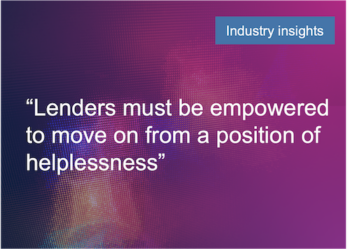The FBI launched a campaign earlier this year to urge the public to call in any military devices they find in their homes. As ageing veterans are passing away, the FBI is concerned that ‘souvenirs’ of past conflicts are sitting in attics and basements across the country. The FBI warns that these items of military ordnance are highly dangerous, remaining intact for decades but exploding without notice.
This campaign perhaps brings home the power of the expression “a ticking time bomb” and helps convey how concerned I am when I worry that banks have a serious problem, which I believe may well explode within the next two years.
We have a global economy which has been battered and bruised by the pandemic and many banks have a loans portfolio which is highly combustible. The Small Business Administration (SBA) in the US reported that they awarded a historic lending provision of nearly nine million loans worth $750 billion for the fiscal year 2020. It would be difficult to believe that most of these businesses are not on life support.
My prediction is that, unless banks implement an intervention immediately, they are going to lose a significant amount of money in the next couple of years when customers default and there will be almost universal retrospective anguish, ruing the fact that more monitoring, support or restrictions weren’t put in place back in 2022.
But at the moment banks don’t have a lot to work with. Most banks are dependent on simply using optical character recognition (OCR) software which scans a borrower’s last two years of tax filings into the bank’s origination software. All they can do is look retrospectively at the customer’s business journey over the last two years. Whatever has happened, has happened and there’s nothing the bank can do about it. The business has thrived, survived or is about to go bust and their loan is either secure or distressed. Sadly, it should not come as a surprise to lenders that, for many businesses, what the last two year’s filings will show is a Covid-induced zero.
What if the banks could directly access their customers’ data? What if they could bypass the 45,000 tax reviewer firms in the States?
Lenders must be empowered to move on from this position of helplessness. Instead of arriving at an exercise of global hand wringing in two years’ time, we need to be intervening right now, in the summer of 2022. Lenders need to identify ways in which their customers can be monitored more actively or even more aggressively, to closely chart their progress. Credit card companies have got a head start on this concept of ongoing monitoring of customers and text customers when they are nearing their credit limit. But by and large, banks remain dependent on end-of-year tax filings – data which could already be 12 months out of date when it’s reviewed.
But what if the banks could directly access their customers’ data? What if they could bypass the 45,000 tax reviewer firms in the States or the 5,000 audit registered firms in the UK and instead use an API that extracted and standardised accounting and transactional data and fed that data straight through into their own origination software? And what if that data was frequently refreshed data, enabling banks to monitor live, in real time, everything about that customer’s business; from its general health, its commitments and where exactly they are on their repayment schedule for government-backed loans, right through to its inherent risks and opportunities?
That’s something the Validis API can do. Providing lenders with the tools to actively monitor the health of customers’ businesses in the here and now, not retrospectively at the year end. Lenders can dive in and check a live feed of an individual borrower’s covenant position or even assess the bank’s position at a portfolio level. It can set automations, proactively respond to early warnings, and report breaches to different teams.
For many customers, this live-monitoring approach means a lender can provide time-critical help and support, can wrap their arms around the small business during difficult times. For others, who are doing well, the lender can use the data to suggest additional products to help them take advantage of business opportunities. And for those that the API flags up are sadly on the verge of insolvency, the bank is forewarned and forearmed and can move into a position to be first to reclaim some credit.
The ability for a bank to review the financial health of a customer in real time, not retrospectively, protects the bank, protects the customer and protects the economy. These challenges can be overcome with the right monitoring and analytics regimes, together with timely access to data. You just need the right technology.

